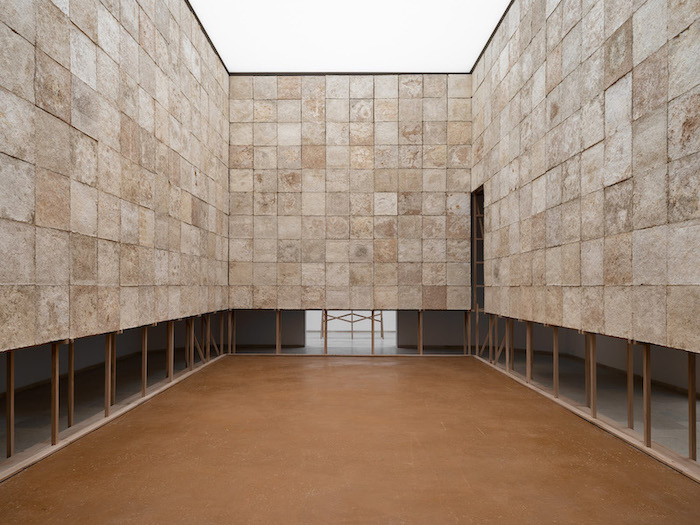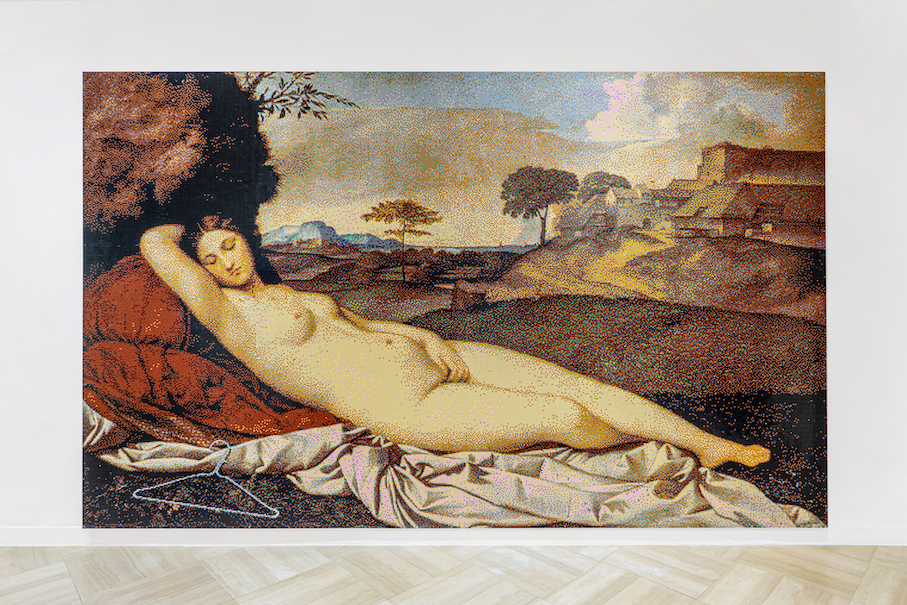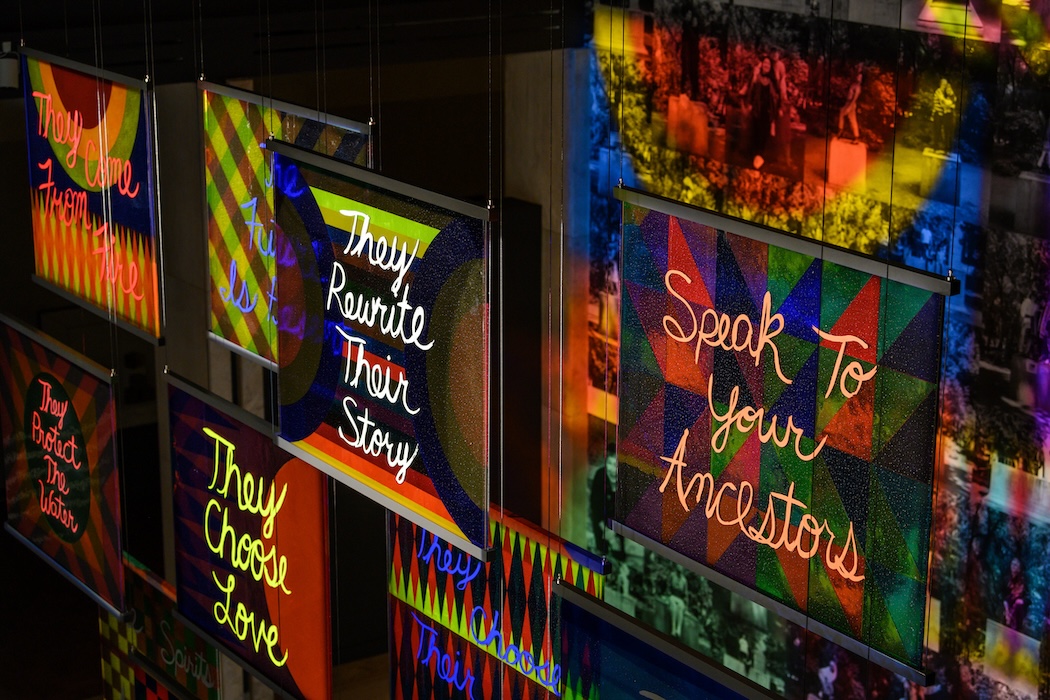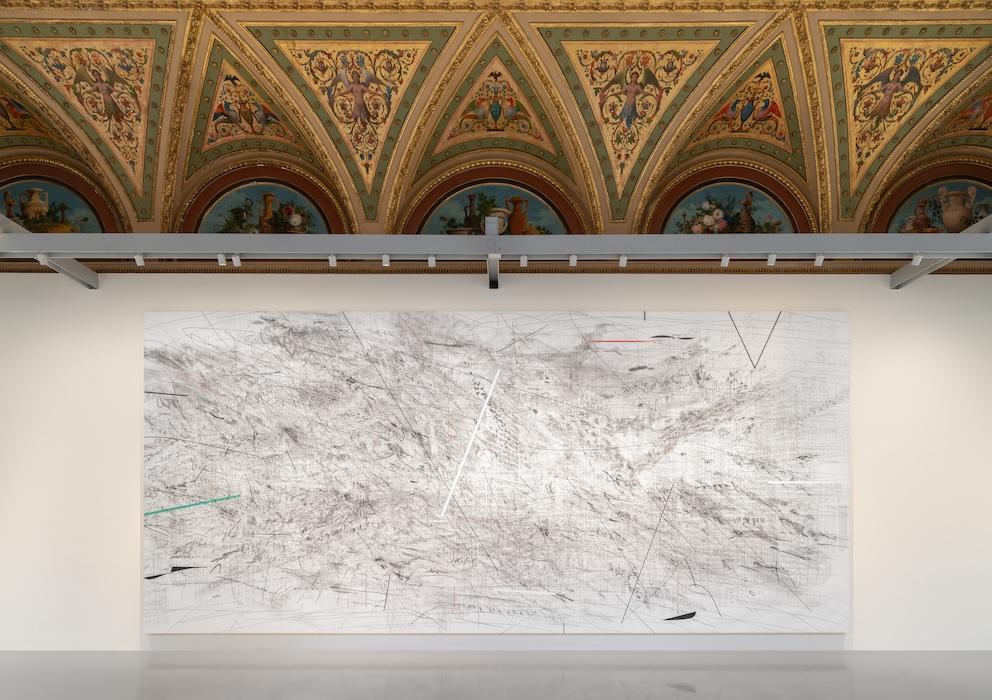The biennale’s international architecture presentations approach climate change and the future with a sense of cautious optimism.
A recurring theme that permeates the 18th International Architecture Exhibition in Venice is a sense of cautious optimism. Climate change is a prevailing topic of discourse, and participants have approached the global environmental crisis by proposing ways in which we can try to coexist and survive as we witness the ways in which humanity has inflicted such devastation, and continue to do so. It was surprising and exciting to still see a sense of wonder and inspiration, especially at a moment in history that feels especially dark and bleak. In great part, this is a direct result of curator Lesley Lokko’s careful selection of participants. Of the 89 participants, over half are from Africa or the African Diaspora, and the gender divide is 50/50, making this one of the most diverse Venice Biennales in history, if not the most.
Many participants took Lokko’s exhibition title, “The Laboratory of the Future,” quite literally, and installed exhibitions that also acted as venues for experimentation, research, and action toward positive change.
The main exhibition is well worth your time to explore and dive deeply into, but here, Whitewall picked some of our favorite national pavilions that demonstrate the wide range of projects on view, and how they connect to the overall theme of the show and have the potential to bring forth real world, actionable change.
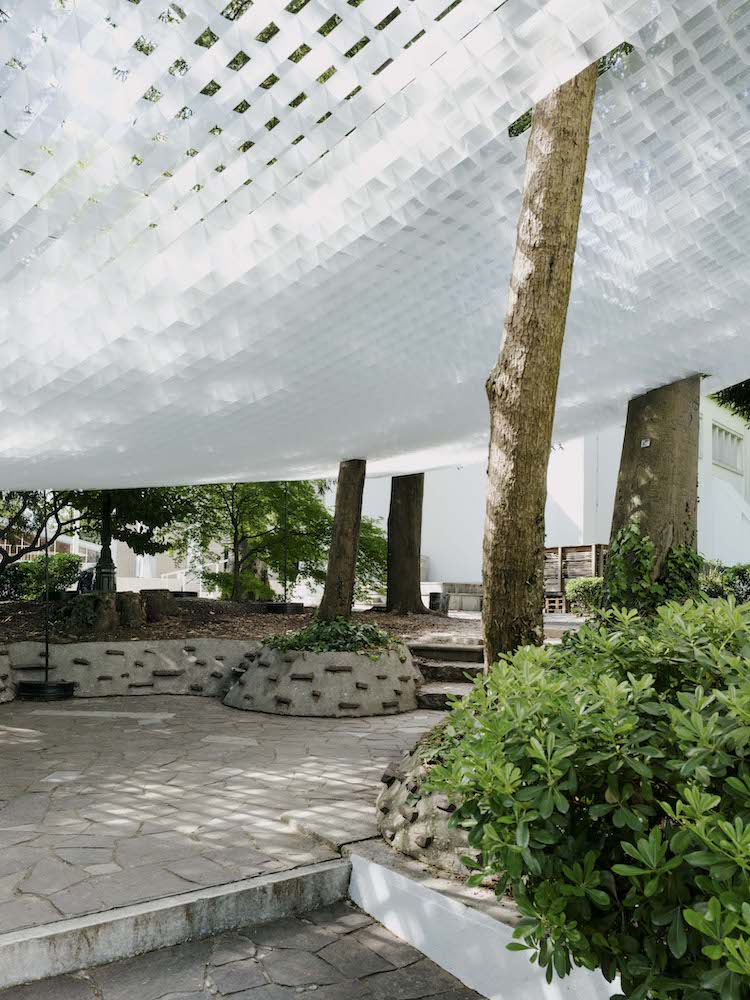
Installation view of the Japan Pavilion, tent roof over façade (designed by Akane Moriyama), Photo by Yuma Harada, courtesy of the Japan Foundation.
Japan: Architecture, a place to be loved
Accessibility can be a challenge at architecture biennials. The trope is that there is usually a lot of wall text and very little “actual” architecture, making it difficult for non-architects to understand what the key takeaways of a presentation might be. The Japanese pavilion demonstrates the power of effective exhibition-making with “Architecture, a place to be loved.” Curated by Maki Onishi and commissioned by the Japan Foundation, the exhibition flows throughout the interior and the exterior garden spaces that surround the building and portrays the power, versatility, and importance of architecture through a straightforward yet highly poetically organized presentation. The show also pays specific homage to the building architect, Takamasa Yoshizaka, who designed the structure in 1956 and who had studied under Wajiro Kon and Le Corbusier. In digitizing Yoshizaka’s diary entries while building the structure, there were many discoveries in how post World War II pressures could have influenced the design considerations for this site. However, he persisted in creating a space he felt best suited the environment of Venice, and it is so inspiring to see how the curatorial team has activated this special space using these different, interconnected throughlines.
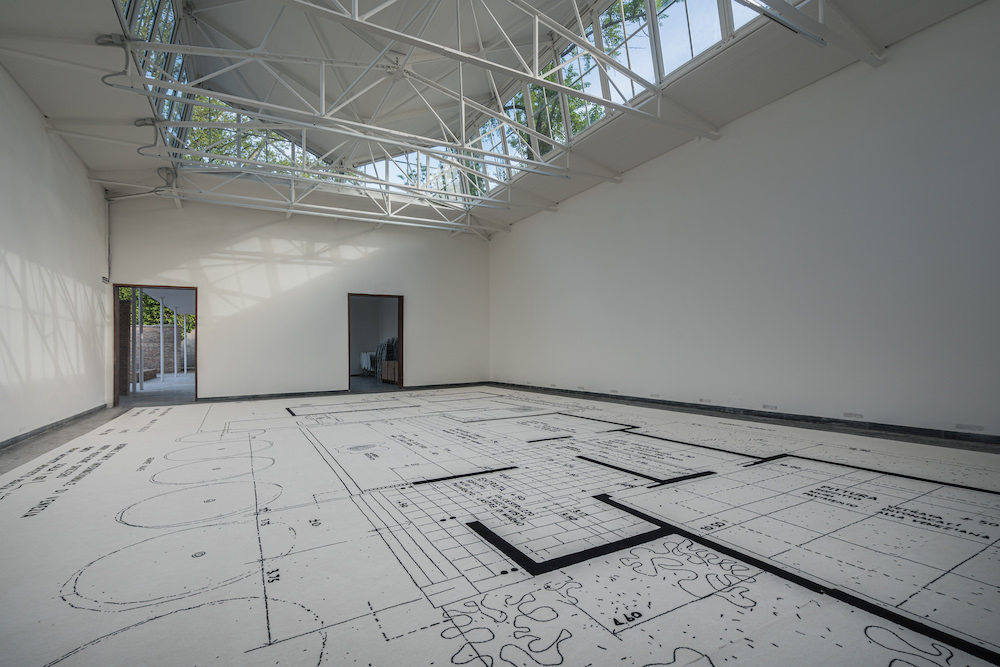
Installation view of the Swiss Pavilion “Neighbours – Karin Sander and Philip Ursprung,” © Karin Sander, VG Bild-Kunst Bonn, 2023, photo © Samuele Cherubini.
Switzerland: Neighbors
The Swiss Pavilion celebrates the Giardini’s architectural history by removing it, partially. The space, designed by Bruno Giacometti in 1952, sits next to the Venezuelan pavilion, designed by Carlo Scarpa four years later. The two architects were friends and also shared a modernist sensibility that has distinguished each of them in the canon, so, the exhibition focuses on visually portraying this connection by literally taking down part of the wall and gates that historically have separated these two spaces. The partially opened brick wall shared between these countries offers new views and access into each of the spaces, and also suggests openings for collaboration and coming together between nations. Curators Karin Sander and Philip Ursprung further explore the history of the pavilion by presenting a large-scale drawing of the original plan, and research some of the design decisions that influenced the way in which the structure came to be.
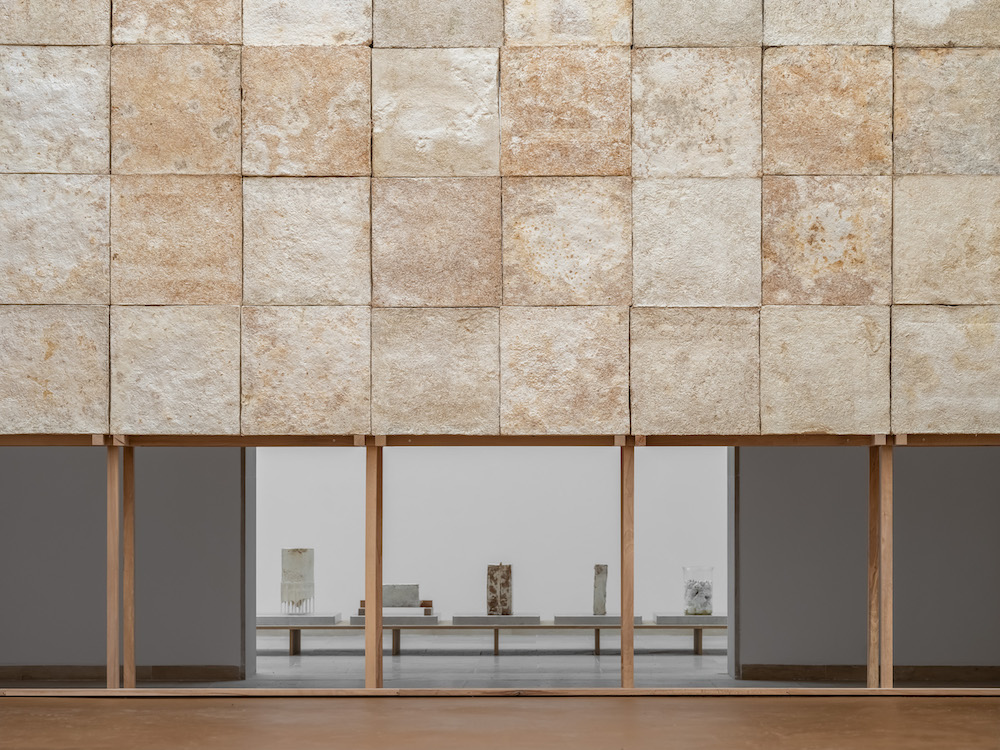
Installation view of the Belgian Pavilion, photo by © Ugo Carmeni.
Belgium: In Vivo
Many works throughout the biennale ponder the potential of using responsibly-sourced, reusable materials, but the Belgian pavilion, curated by Bento and Venciane Despret, takes it a step further by actually building a structure with this in mind. Working with natural, living materials sourced from the urban area of Brussels, the curators have created a large wooden sculpture with panels of mycelium, the vegetative part of fungi, that rests on a floor of raw earth from excavated soil. Beyond the aesthetic qualities of this structure, the sensory, tactile, and acoustic elements that reverberate throughout the pavilion perfectly cohere to form a fantastic presentation. In keeping with the overall theme of “The Laboratory of the Future,” the exhibition makes space to demonstrate the process of creating and working with the fabricated materials. And do not miss the framed mycelium in the back room.
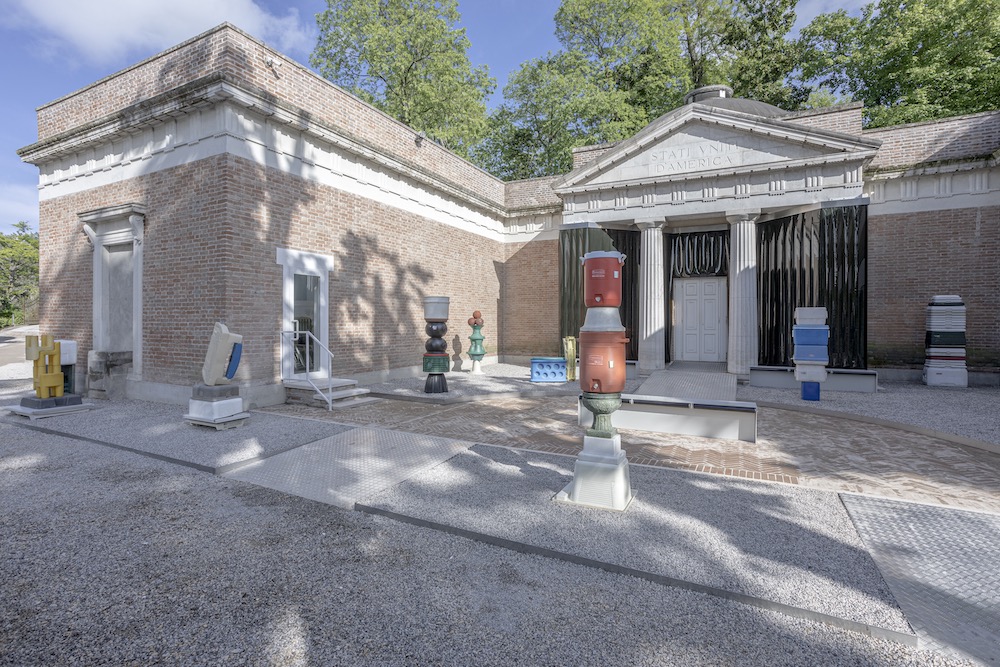
Lauren Yeager, “Longevity,” 2023, salvaged plastic objects. “Everlasting Plastics,” United States Pavilion, Biennale Architettura 2023, exhibition design by Faysal Altunbozar, Chloe Munkenbeck, photo by ReportArch / Andrea Ferro Photography.
US: Everlasting Plastics
This year, the United States Pavilion tackles an all too present, human-made material: plastic. “Everlasting Plastics,” commissioned by Tizziana Baldenebro, SPACES’s Executive Director and co-curated by Baldenebro and Lauren Leving, Curator at the Museum of Contemporary Art Cleveland includes a wide array of works by Xavi L. Aguirre, Simon Anton, Ang Li, Norman Teague, and Lauren Yeager that incorporate recycled and repurposed plastic material using a wide range of approaches. Rather than simply dwelling on the utter devastation that plastic has had on the environment since its popularization in the early 20th century, these artists have undertaken efforts to utilize this material in inventive and responsible ways. Each artist is given their own space at the pavilion, letting each artist’s work and approach shine both individually and collectively. We especially enjoyed the courtyard installation, which consists of a series of columnar forms by Yeager made from salvaged discarded plastic objects found around Cleveland and surrounding neighborhoods. These materials, once en route to landfills, are given new life and transformed into votive forms that bring up feelings of fond nostalgia and leave the viewer with a hopeful optimism that designers and artists will continue to think of ways to realize impressive works and simultaneously do their part in helping enact meaningful change to their environments.
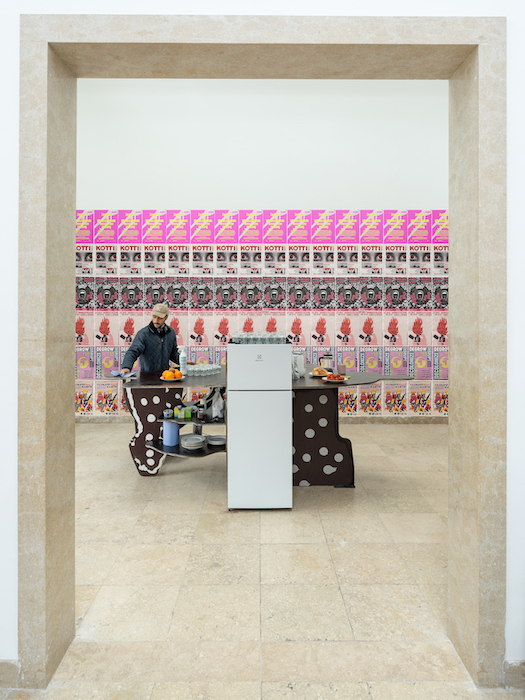
Installation view of the German Pavilion, “Open for Maintenance” © ARCH+ SUMMACUMFEMMER BUERO JULIANE GREB.
Germany: Open for Maintenance
“Open for Maintenance,” the presentation at Germany’s pavilion, tackles a less visible issue as it relates to exhibition-making: what happens to a pavilion when the show concludes? Using the space as a site for storing materials sourced from over 40 national pavilions at the Art Biennale in 2022, the entire space is reconfigured as a workshop, equipped with workspaces, bathrooms, and a kitchen. Throughout the run of the show, the curators, alongside the Sto Foundation’s Venice Biennale LAB Series and AIT-Dialog, are creating workshops wherein architects and apprentices will work with local communities on projects to improve the city using this discarded material. It is remarkable to see how much usable material inhabit this space, and it will be interesting to see what impacts the project will have on the city in ways that could perhaps enact long-term changes. And don’t miss the five-channel video work by architect and photographer Giovana Silva, who has documented the streets and canals of Venice being cleaned and serviced by garbage collectors and maintenance workers. This project is curated by ARCH+, SUMMACUMFEMMER, and BÜRO JULIANE GREB.
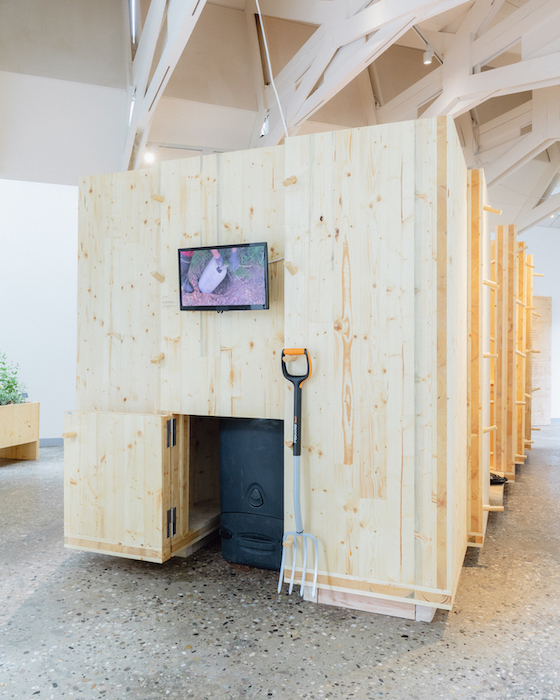
Installation view of the Finnish Pavilion, “Huussi-Imagining the Future History of Sanitation,” photo by Matteo de Mayda, courtesy of La Biennale di Venezia.
Finland: Huussi, Imagining the Future History of Sanitation
The scarcity of freshwater on Earth is also becoming a more and more dire, urgent issue that is in need of immediate attention. This year, Finland’s pavilion suggests one place where we can start to save water and be more judicious about how we deal with our waste: the bathroom. The pavilion has invited The Dry Collective, a group of architects, designers and artists led by project curator, Arja Renell, to educate visitors about the crisis, and suggest actionable change to help solve the problem, one toilet at a time. Inside, they have installed a Finnish huussi, which is a type of composting toilet often found in rural areas of Finland, in the middle of the pavilion laminated timber (CLT) panels as a building material. Though it is not in use so that viewers can walk into the very sleek structure, it is fully functional and will be donated to VERAS, a local non-profit organization in Vignole, Venice. The presentation is full of whimsy, excellent design, and offers real-world solutions to ongoing problems, which we appreciate seeing.



